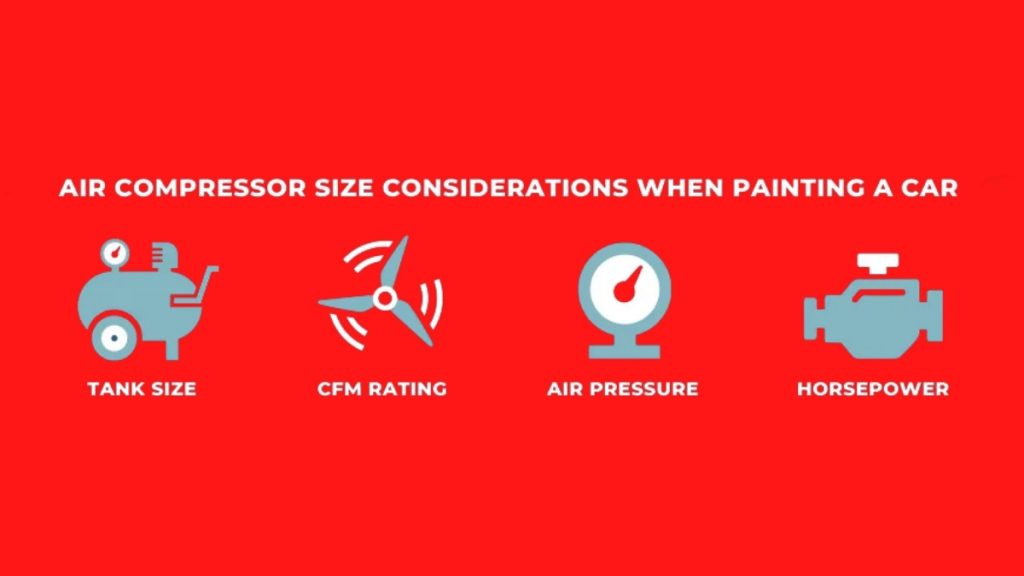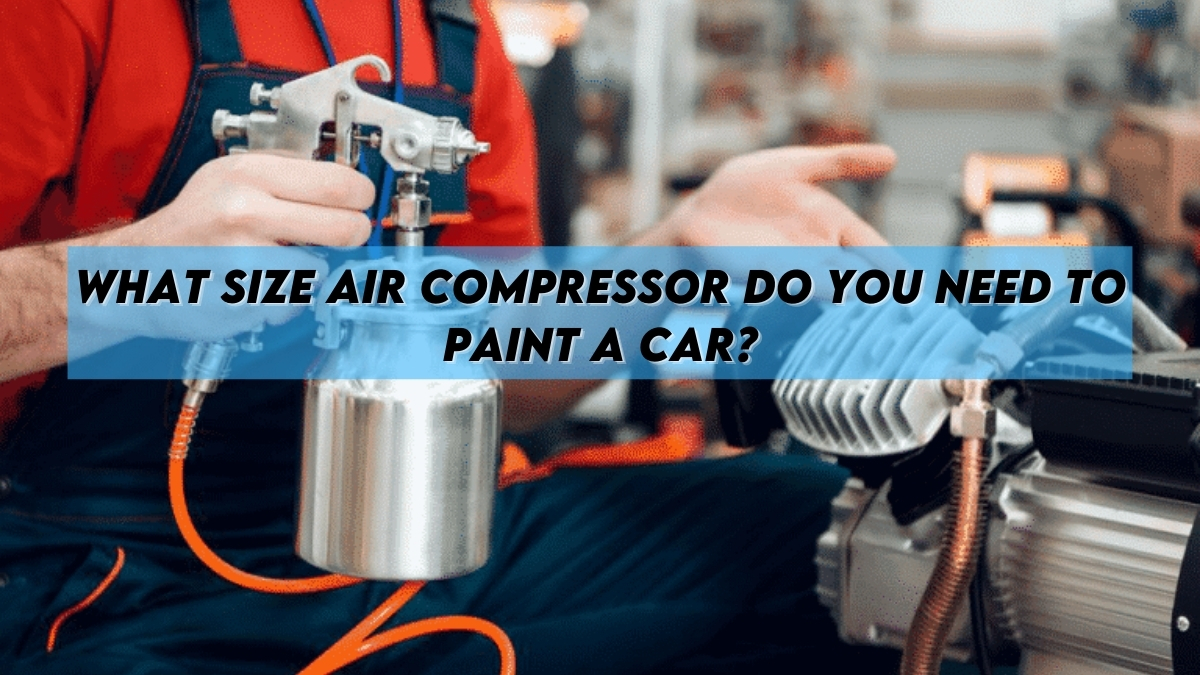Air compressors make use of power that is generated by an engine or motor which compresses air and provide it in a pressured flow to power another process or to complete a task.
In the automotive sector air compressors are often used to paint vehicles by using compressed air to spray paint from a nozzle with a powerful but even flow.
A compressor for painting cars works by breaking paint up with pressured air and then applying that pressure to create the fine paint mist using a nozzle.
The air compressor that is used for car painting is able to deliver air with a sufficient flow that paint is transformed into a fine liquid particulate. This is perfect to create an even coating over the car.
Also Read: How to Use an Air Compressor on Your Flat Tire
In addition to providing a steady flow of paint that guarantees efficient use of paint the compressor used car painting process is quicker and more efficient than other methods for painting. It allows for full coverage even in areas that are difficult to reach without the need to verify manually that paint is covering every surface.

What Size Air Compressor Do I Need For Painting Cars?
The answer will depend on many variables. Based on your project and the type of car painting that you require, air compressor criteria can differ. For instance, full-vehicle painting is more demanding than repair or touch-up work.
The following list of applications will be able to explain some of these applications that are more popular:
- Size of the tank: The tank size of an air compressor used for spray painting cars can make an impact on the effectiveness of the procedure. Smaller tanks need to be filled — often multiple times during larger projects like full-vehicle coating.
Smaller tanks can also cause greater variance in the flow and pressure of paint, resulting in uneven coats. Tanks with 50 gallons or greater are usually recommended. tanks of 60 gallons or greater generally means that the entire vehicle can be coated in a single pass without the need to refill. - CFM Rating: A higher CFM (cubic feet per minute) is required for work of breaking down paint into small particles that allow spray painting your vehicle feasible. A large quantity of air can make the difference in ensuring that the paint is evenly applied and that the final coat looks uniform.
We’ll talk about psi later but a large-volume, low pressure (HVLP) compressor will typically enough to finish an car painting job. You should look for two-stage compressors that can deliver up or 20 CFM. - Pressure of air: As mentioned above Pressure (psi) is of lesser importance when using an air compressor to paint cars more so than CFM is.
The pressure rating is a measure of the pressure at which paint is released via the nozzle. It is not as important as achieving an atomization that is correct for the paint by using high CFM.
Try to find at least 15 psi. There are applications, like clear coats, that are better suited up to 25 or 20 psi. - Horsepower To paint car an air compressor of 10 horsepower will usually suffice. However, compressors with higher horsepower can be more efficient, and are able to be utilized for different jobs.
